In recent years, the real estate market has witnessed a significant shift in buyer preferences, with an increasing number of homebuyers moving away from urban centers to suburban and exurban areas. This trend, driven by various factors including changing lifestyle preferences, economic considerations, and the ongoing impact of the COVID-19 pandemic, has reshaped the landscape of home building and real estate development. Explore here in this home building report and article the reasons behind this migration. The benefits and challenges of suburban and exurban living, and the implications for home builders and developers. Talk to experts for more information about home building. Get expert advice and guidance through construction consulting services.
Understanding the Migration to Suburbs and Exurbs
The migration to suburbs and exurbs is characterized by buyers seeking more space, affordability, and a better quality of life. Several key factors contribute to this trend:
Desire for More Space
Urban living often comes with the trade-off of limited living space. The pandemic highlighted the importance of having ample space for home offices, recreational activities, and outdoor living. Suburban and exurban homes typically offer larger floor plans, bigger yards, and access to open spaces, making them attractive to families and individuals seeking more room to live, work, and play.
Affordability
Housing costs in urban centers have skyrocketed, making homeownership increasingly unattainable for many buyers. Suburban and exurban areas generally offer more affordable housing options, allowing buyers to get more value for their money. Lower property taxes, reduced cost of living, and the potential for lower mortgage payments are significant draws for cost-conscious buyers.
Quality of Life
Suburbs and exurbs often provide a higher quality of life, characterized by safer neighborhoods, better schools, and a greater sense of community. These areas typically have lower crime rates, less congestion, and access to recreational facilities, parks, and natural beauty, making them ideal for raising families and enjoying a more relaxed lifestyle.
Remote Work and Flexibility
The rise of remote work has reduced the necessity for many employees to live close to their workplaces. With the ability to work from anywhere, homebuyers are no longer tethered to urban centers. This newfound flexibility has enabled them to explore living in suburban and exurban areas without sacrificing career opportunities.
Benefits of Suburban and Exurban Living
The move to suburbs and exurbs offers numerous benefits to homebuyers, contributing to the popularity of these areas:
Increased Privacy and Tranquility
Suburban and exurban neighborhoods often provide greater privacy and tranquility compared to the hustle and bustle of urban environments. Larger lots, less noise pollution, and fewer neighbors in close proximity contribute to a more peaceful living experience.
Enhanced Community Engagement
Many suburban and exurban communities prioritize fostering a sense of community. With local events, neighborhood associations, and community activities, residents can build strong relationships and feel more connected to their surroundings.
Access to Nature and Outdoor Activities
Proximity to nature is a significant draw for many buyers. Suburban and exurban areas often boast parks, hiking trails, lakes, and other outdoor recreational opportunities, promoting a healthier and more active lifestyle.
Customizable Homes
New developments in these areas often offer more customizable home options, allowing buyers to tailor their homes to their specific needs and preferences. From floor plans to finishes, the ability to personalize a home is a compelling advantage.
Challenges of Suburban and Exurban Living
While there are many benefits, there are also challenges associated with living in suburban and exurban areas:
Longer Commutes
For those who still need to commute to urban centers for work or other activities, longer commute times can be a drawback. However, the increase in remote work opportunities has mitigated this challenge for many.
Limited Amenities
Suburban and exurban areas may have fewer amenities and conveniences compared to urban centers. Access to shopping, dining, cultural events, and specialized services might require more travel.
Infrastructure Development
Rapid growth in suburban and exurban areas can strain existing infrastructure. Shows the home building report. Ensuring that roads, utilities, schools, and healthcare facilities keep pace with the population increase is crucial for maintaining a high quality of life.
Implications for Home Builders and Developers
The migration trend has significant implications for home builders and developers:
Increased Demand for Suburban and Exurban Housing
Home builders are experiencing heightened demand for properties in suburban and exurban areas. This demand is driving the development of new communities, with a focus on spacious homes, modern amenities, and appealing community features.
Emphasis on Flexibility and Customization
Buyers moving to these areas are seeking homes that offer flexibility and customization. Builders need to prioritize designs that accommodate home offices, multi-functional spaces, and outdoor living areas to meet these evolving preferences.
Sustainable and Resilient Design
As these areas grow, there is an increasing emphasis on sustainable and resilient design. Builders are incorporating energy-efficient features, sustainable materials, and resilient construction practices to appeal to environmentally conscious buyers.
Collaboration with Local Governments
Successful development in suburban and exurban areas requires collaboration with local governments to ensure that infrastructure keeps pace with growth. Builders and developers must work closely with municipalities to address zoning, utilities, transportation, and community services.
Conclusion
The migration of homebuyers to suburbs and exurbs is a significant trend reshaping the real estate landscape. Driven by a desire for more space, affordability, and an enhanced quality of life, buyers are finding suburban and exurban living increasingly appealing. While there are challenges, the benefits of these areas are compelling, making them a top choice for many. The home building report shows these trends.
For home builders and developers, this trend presents both opportunities and responsibilities. By focusing on flexibility, customization, sustainability, and collaboration with local governments, they can meet the needs of today’s homebuyers and contribute to the creation of vibrant, thriving communities. As the trend continues, the suburbs and exurbs will play an increasingly important role in the future of residential real estate. Talk to experts for more information about home building. Get expert advice.


